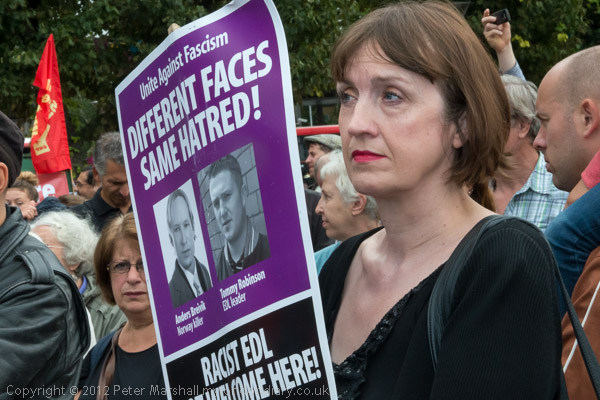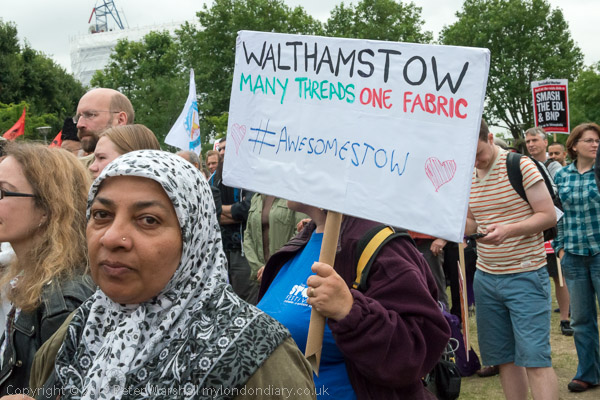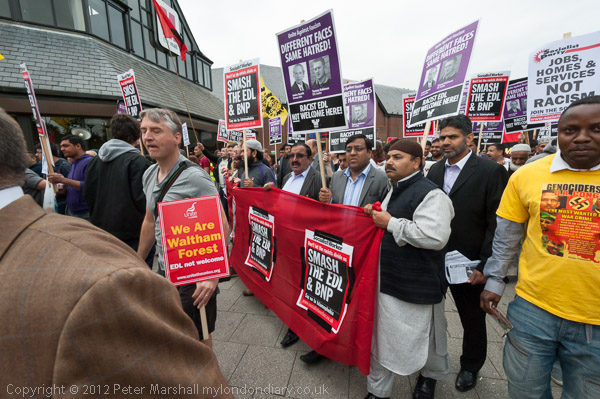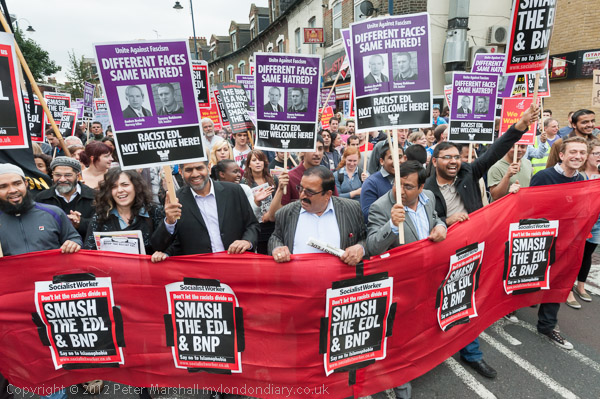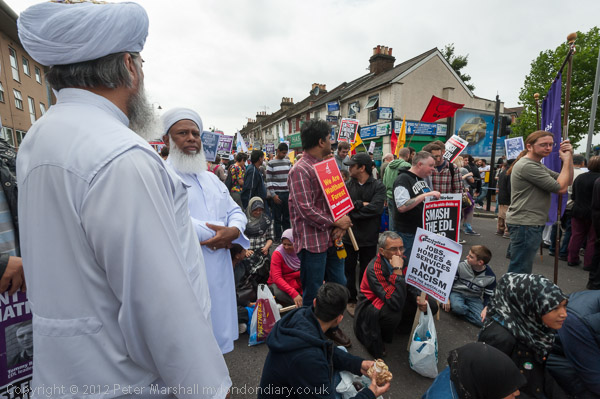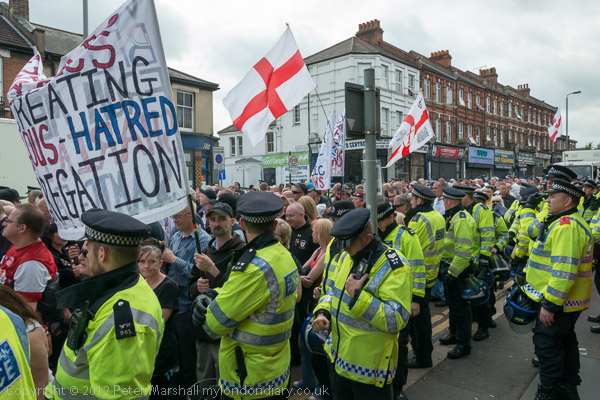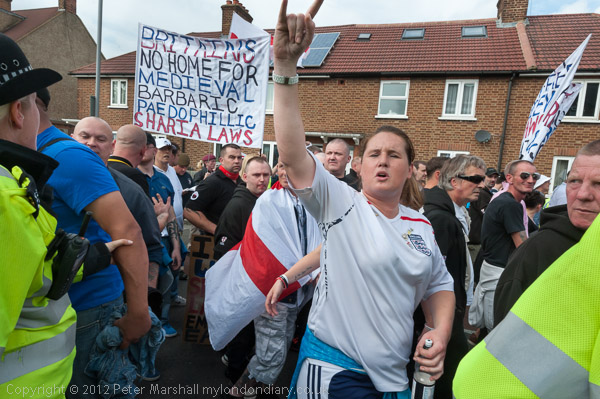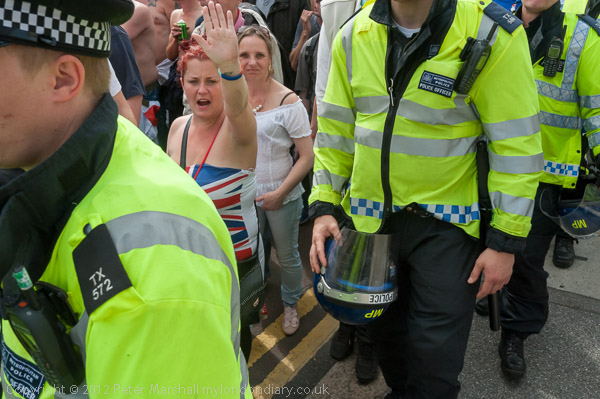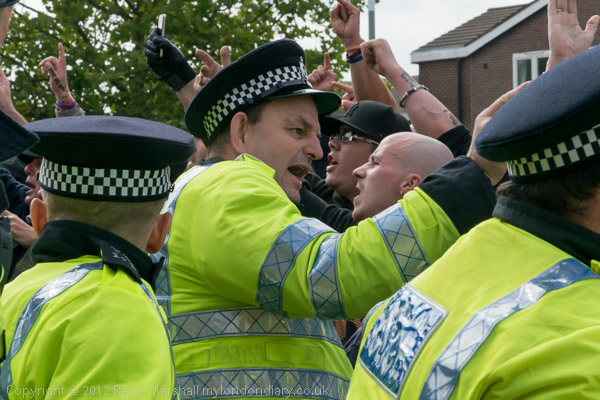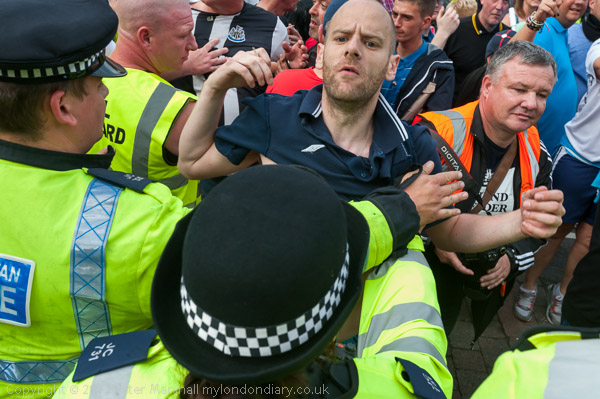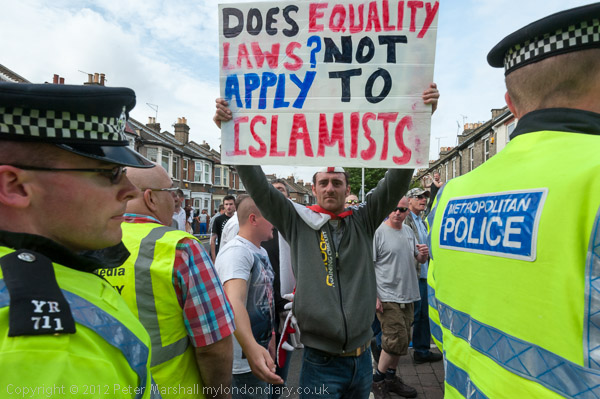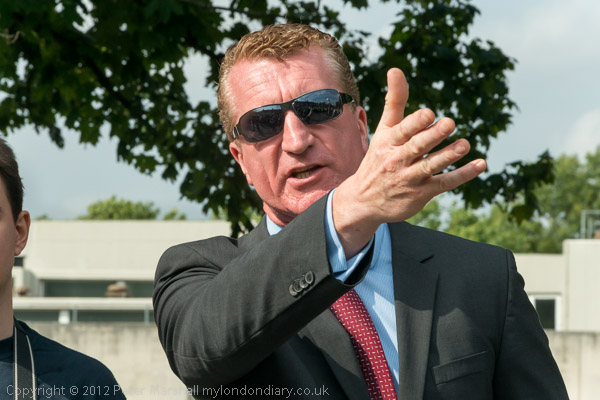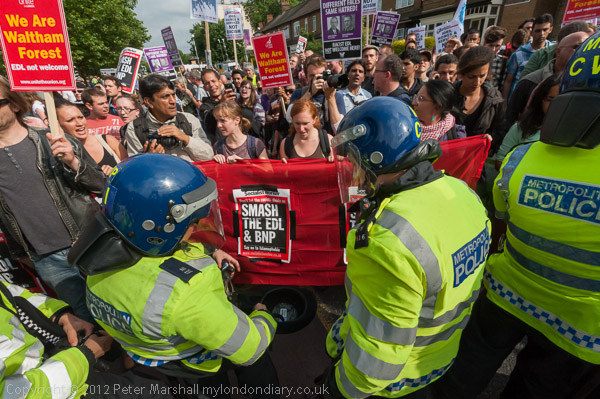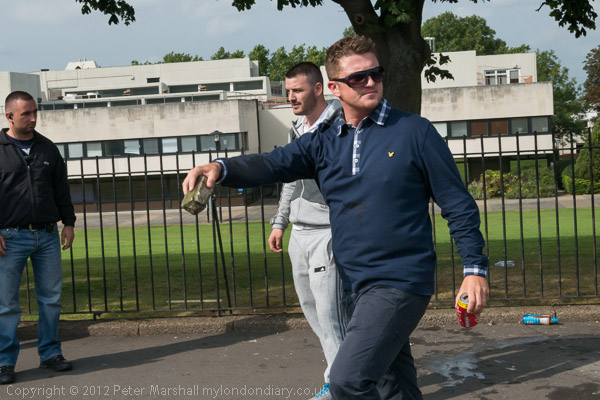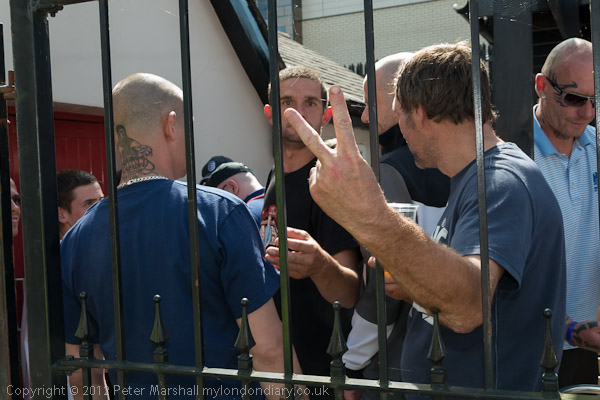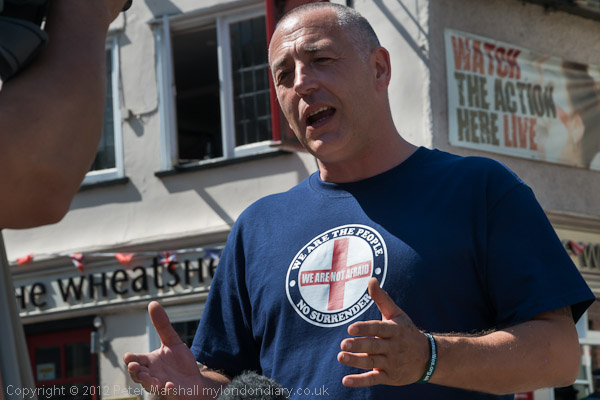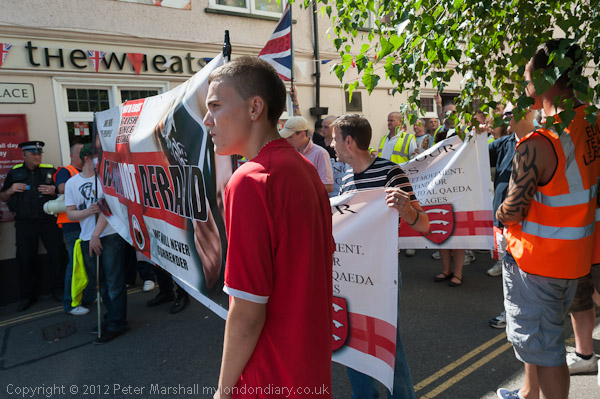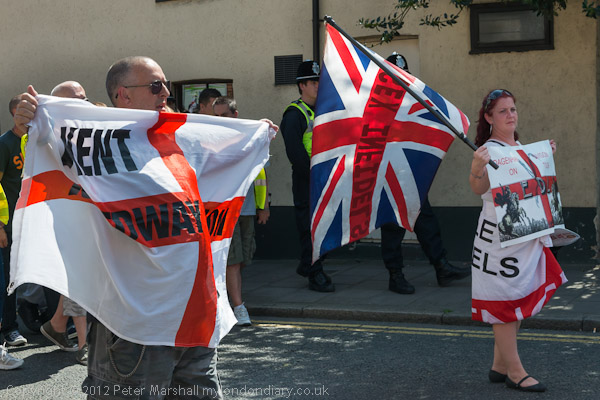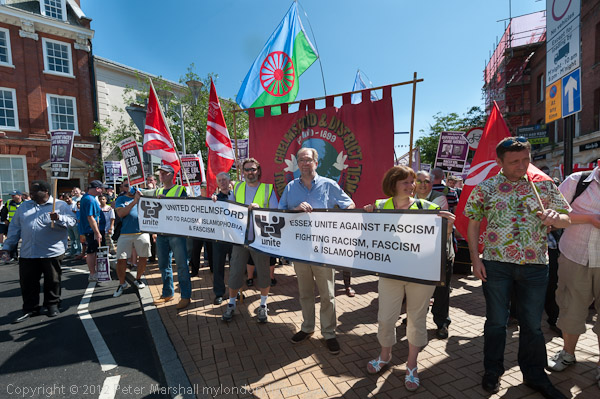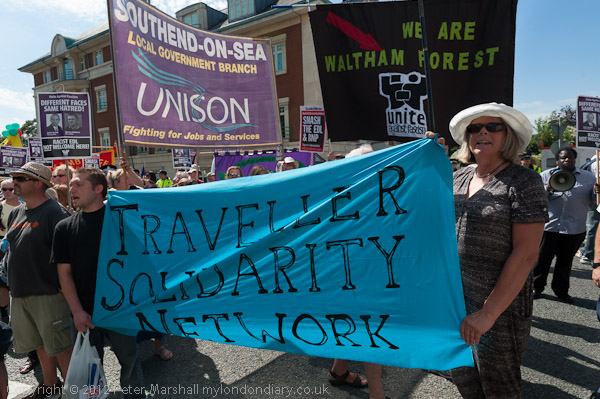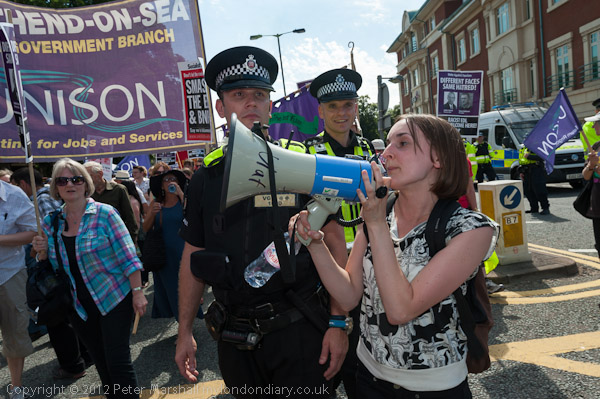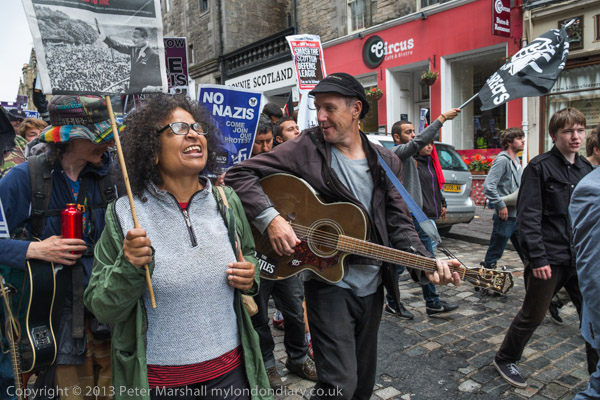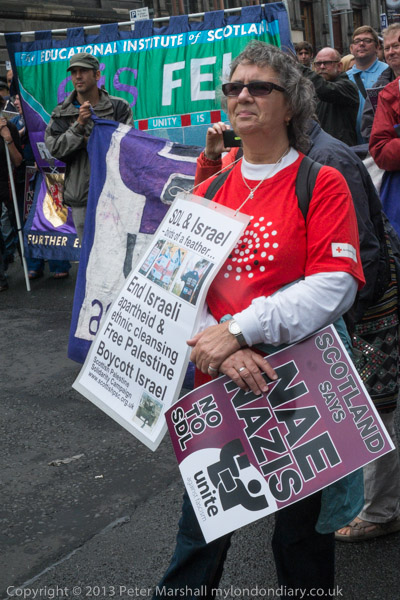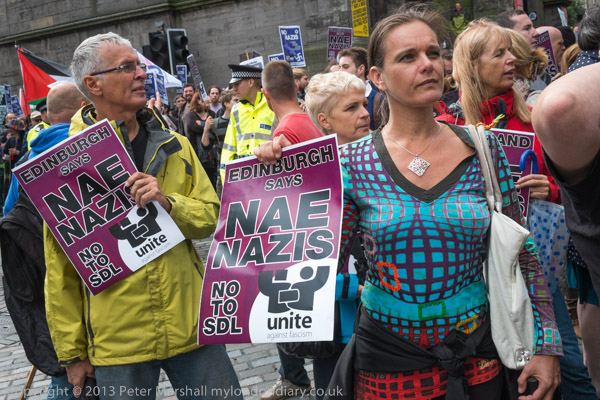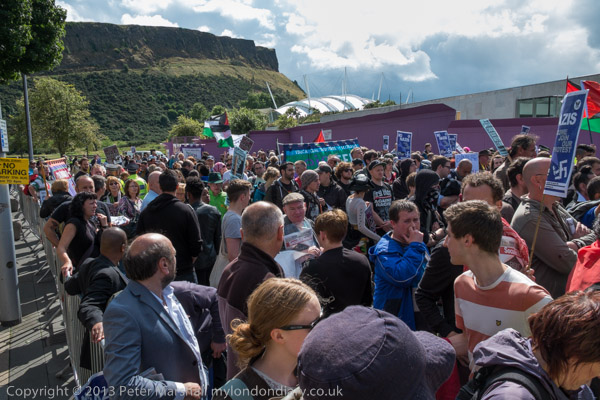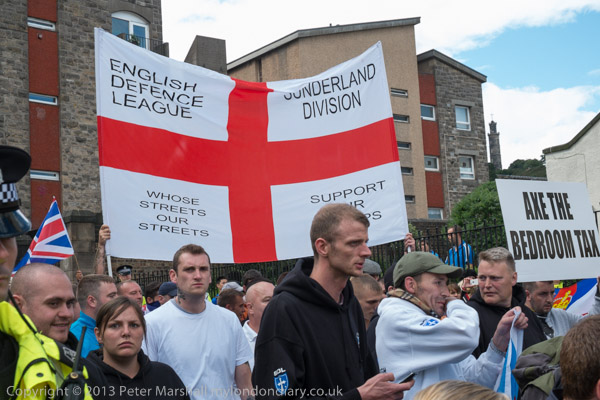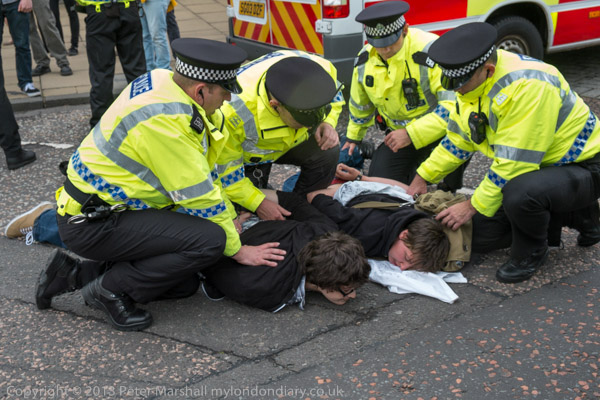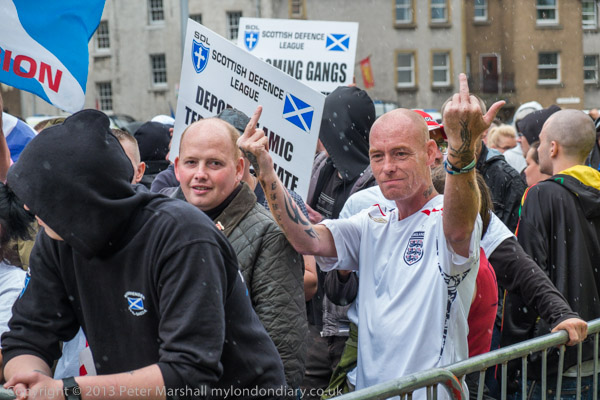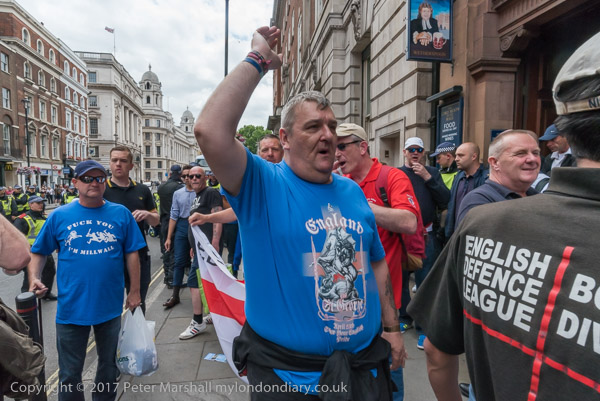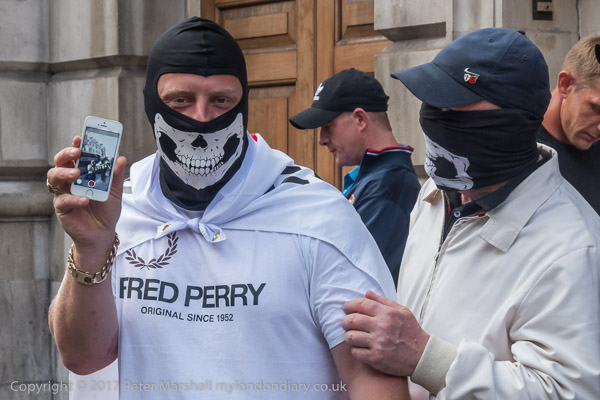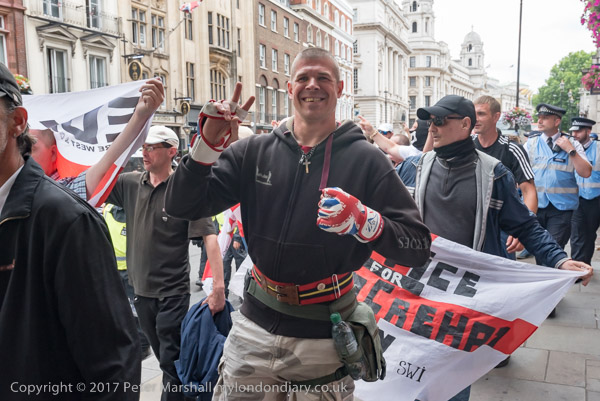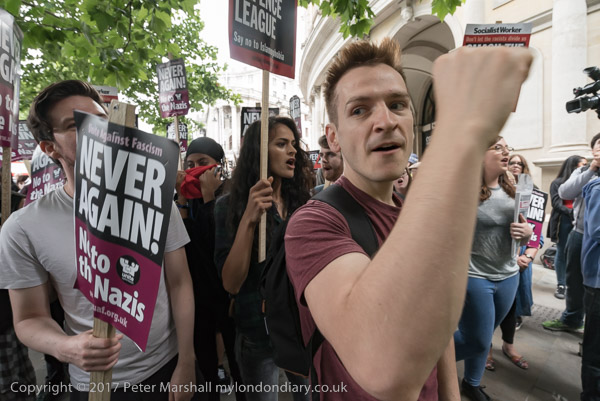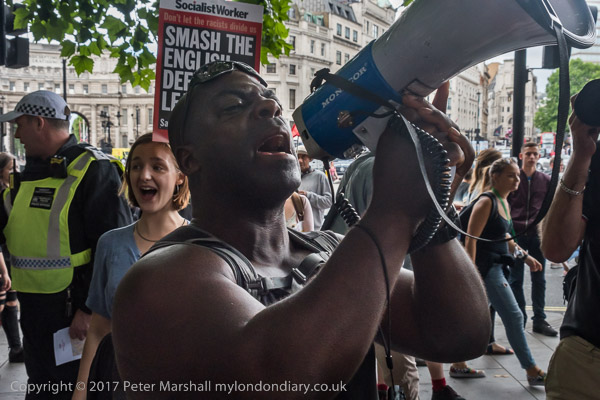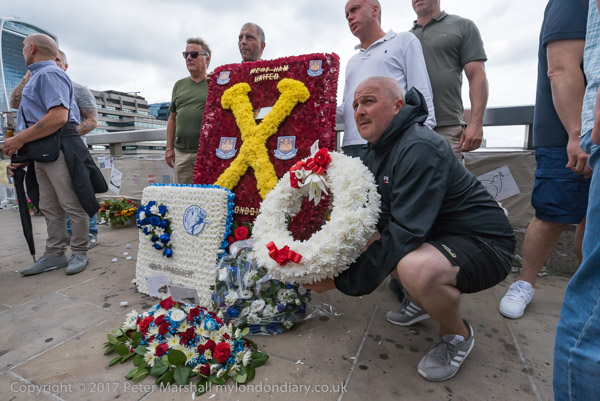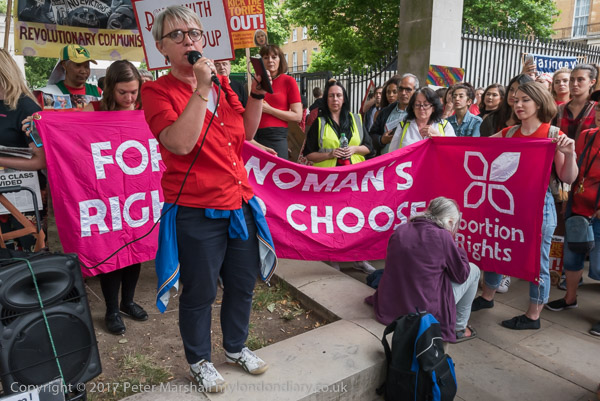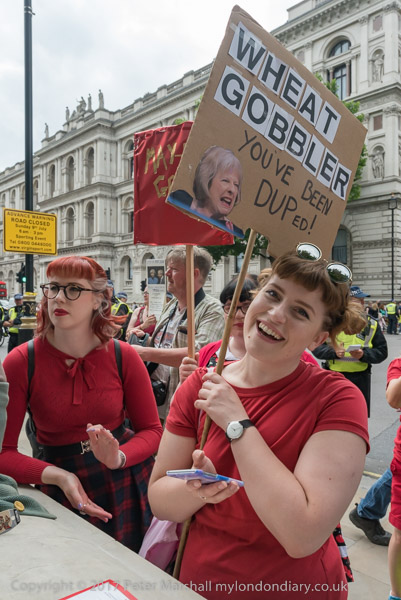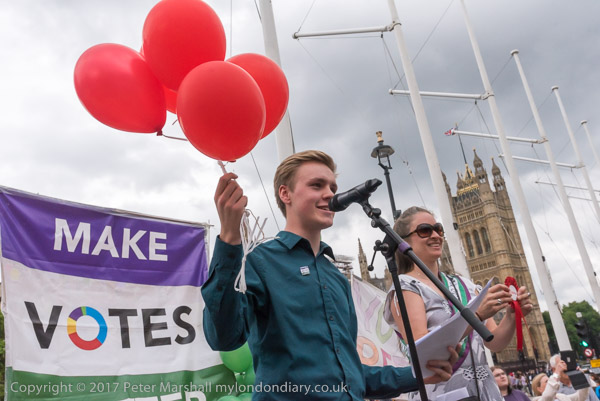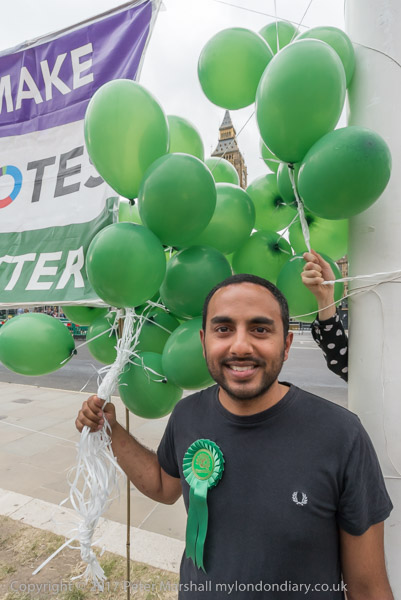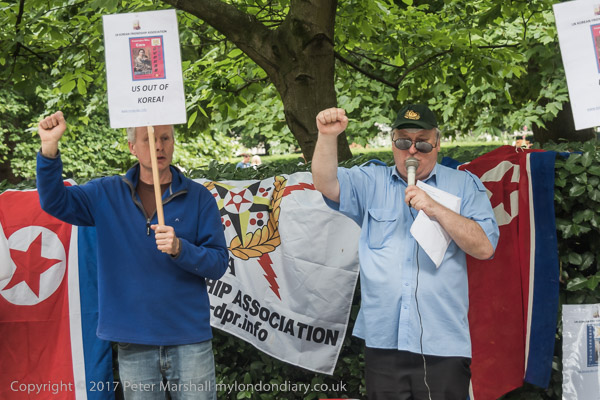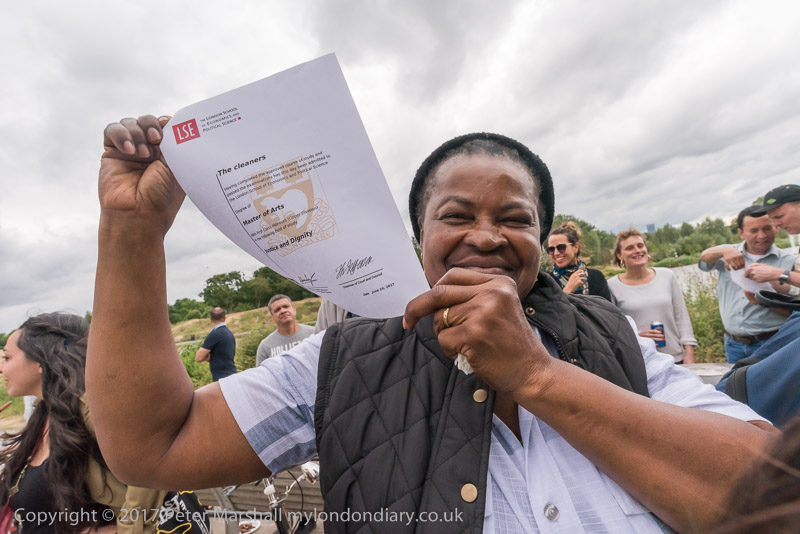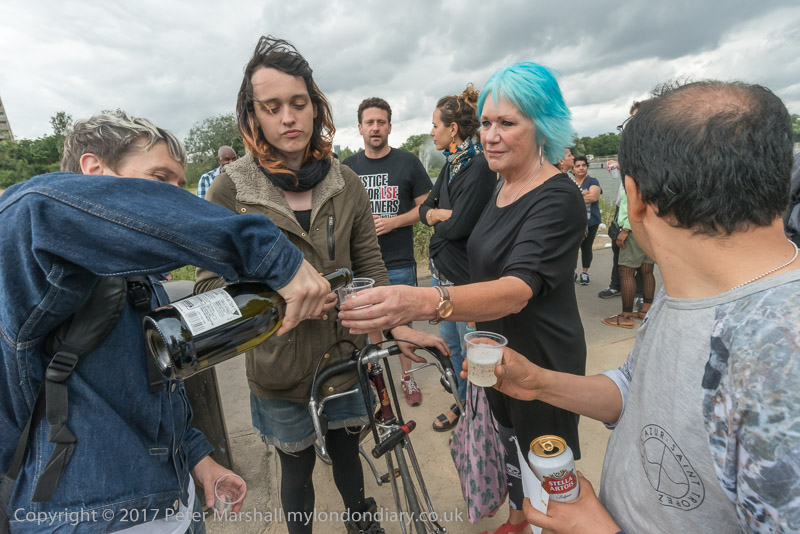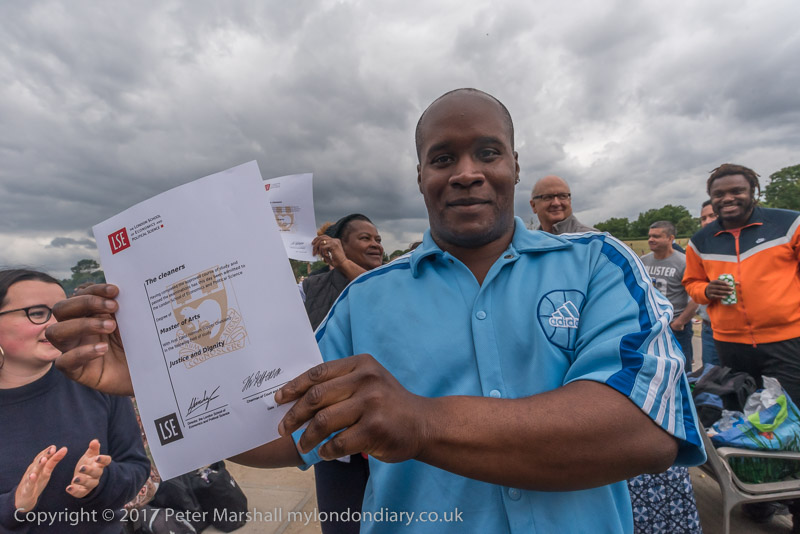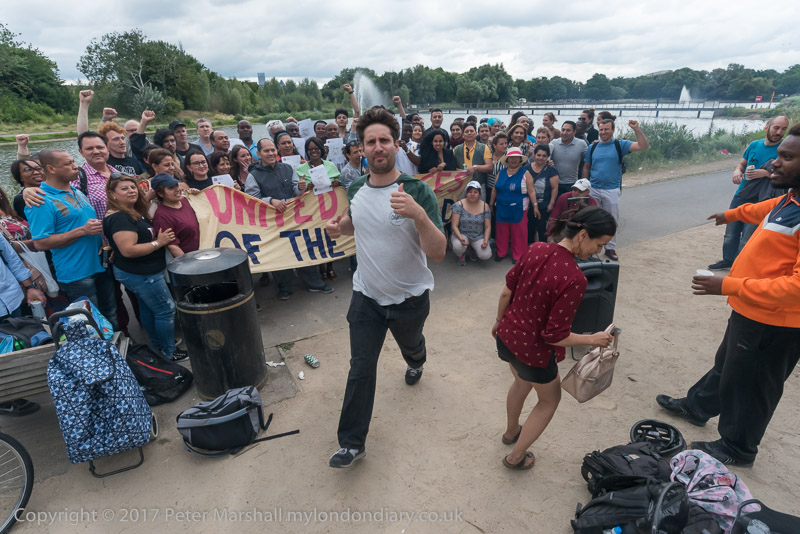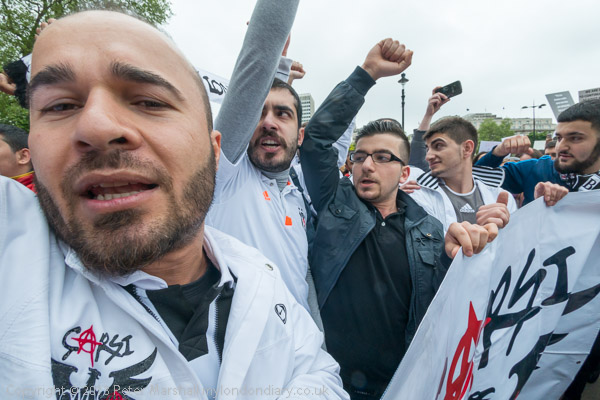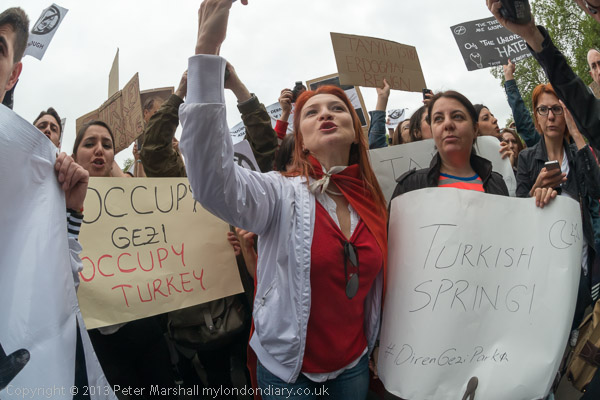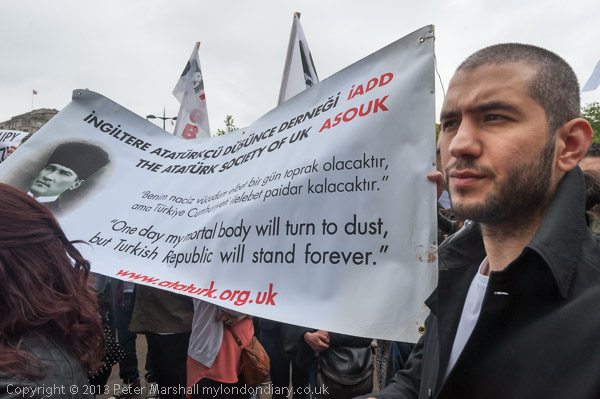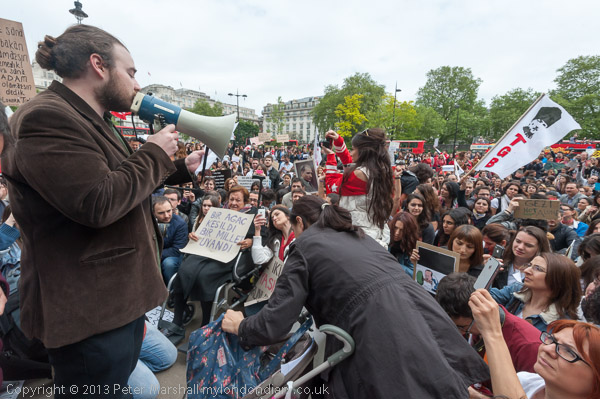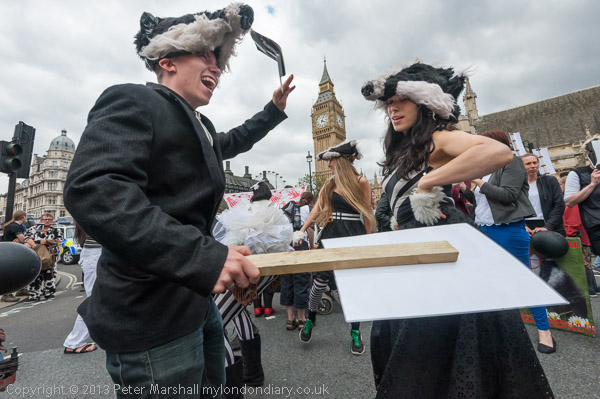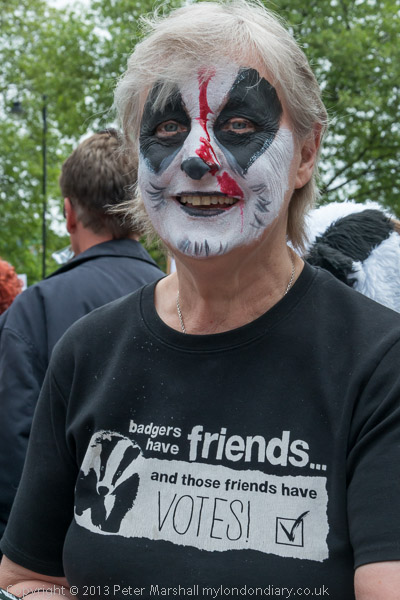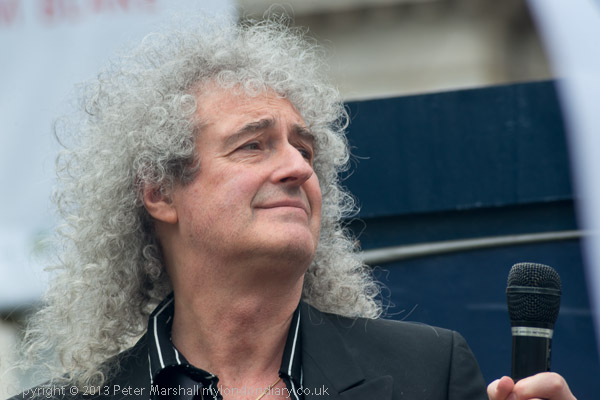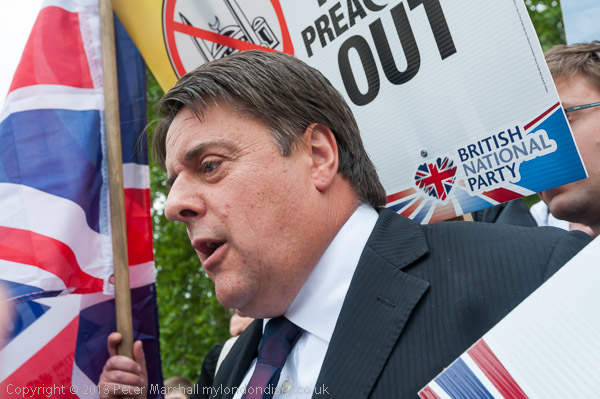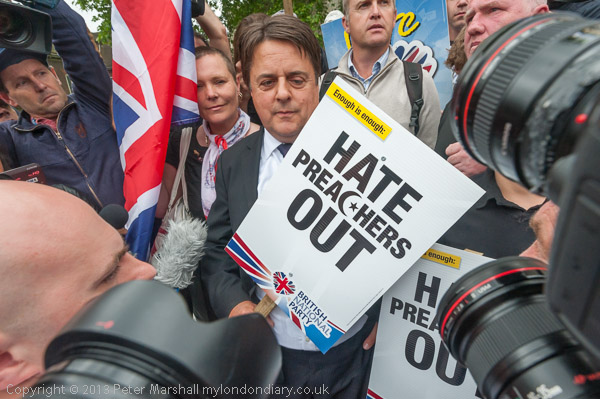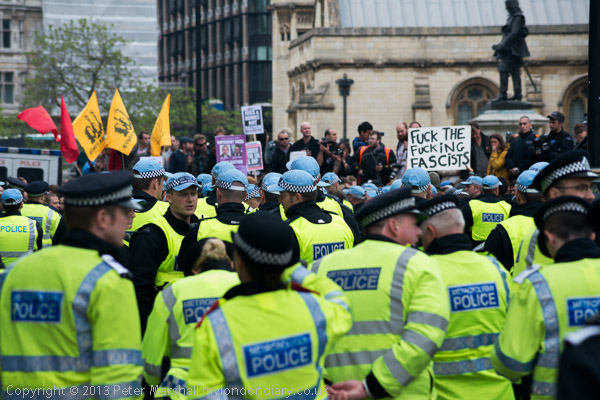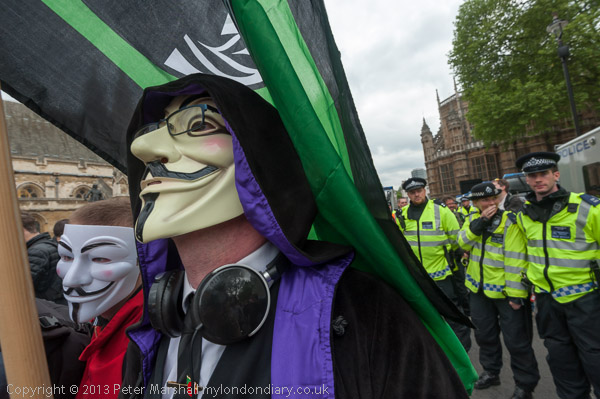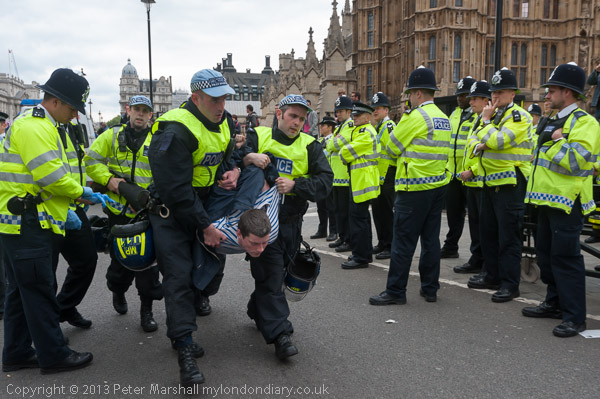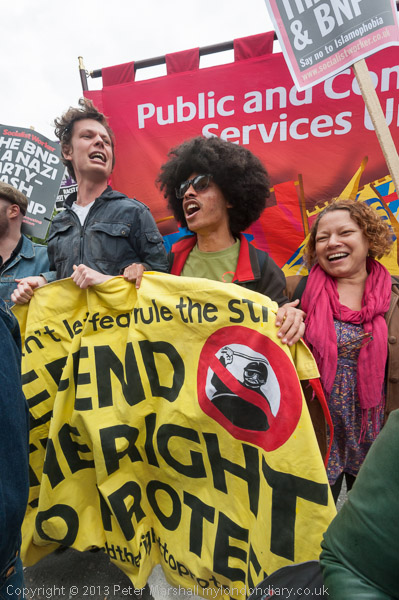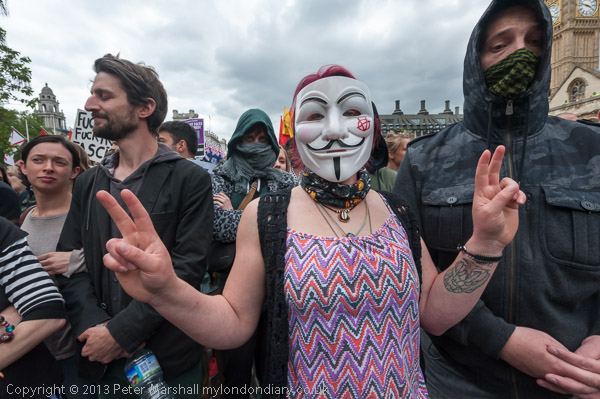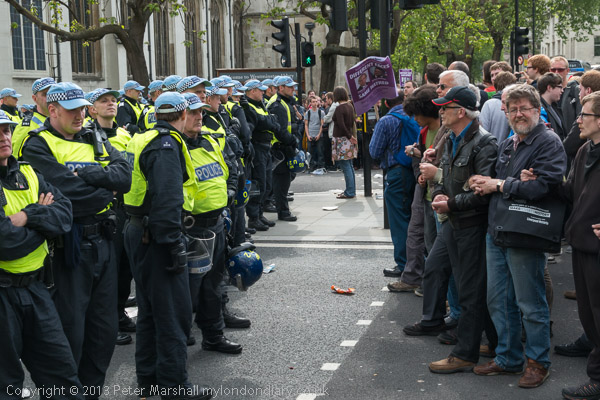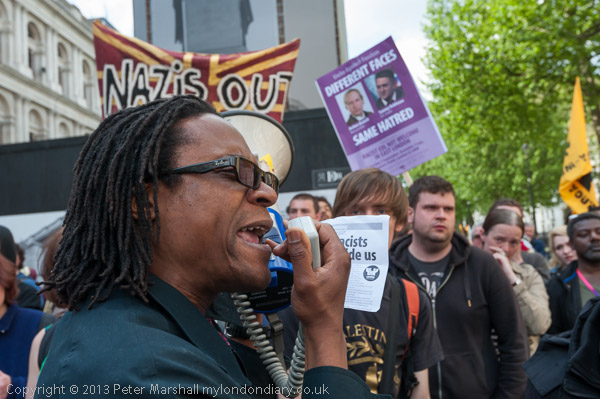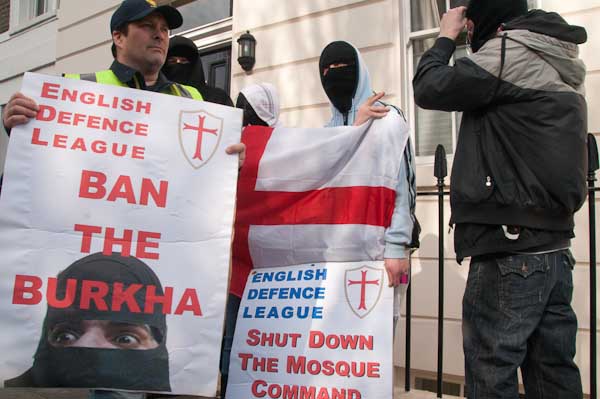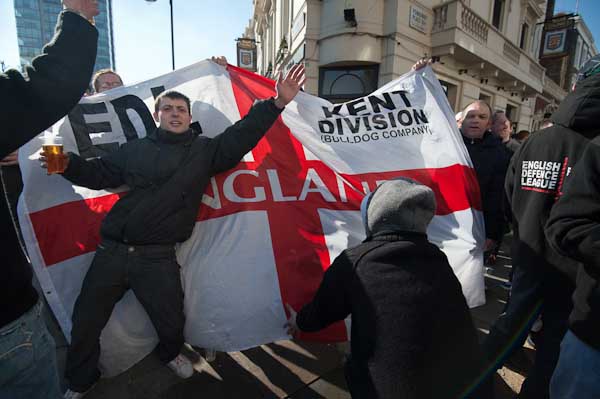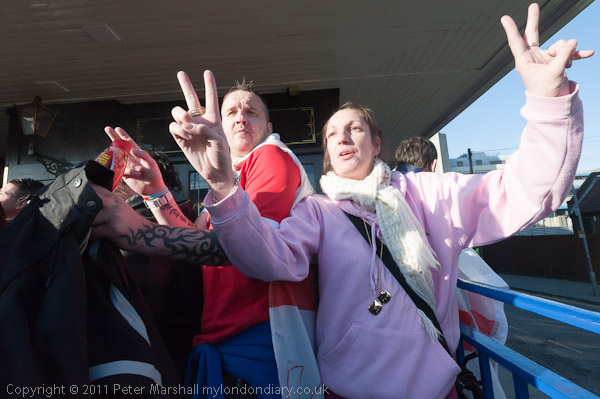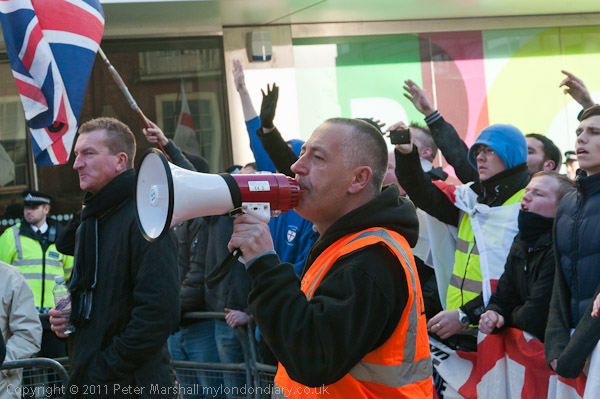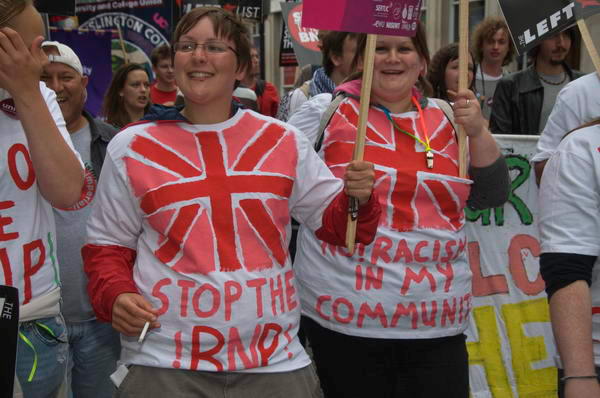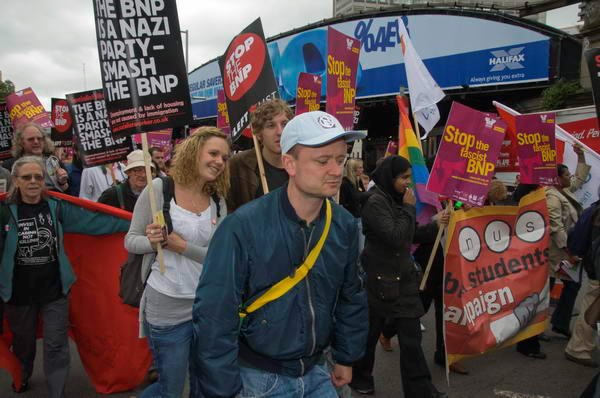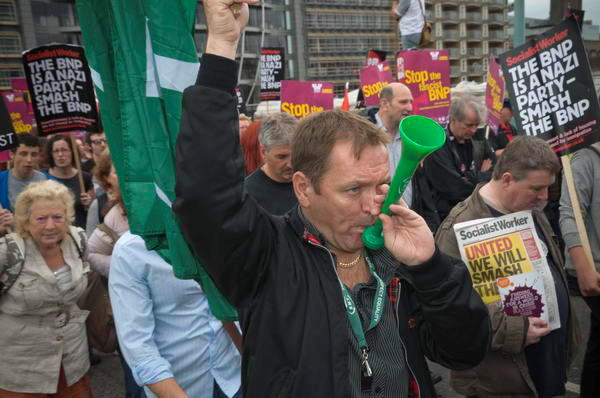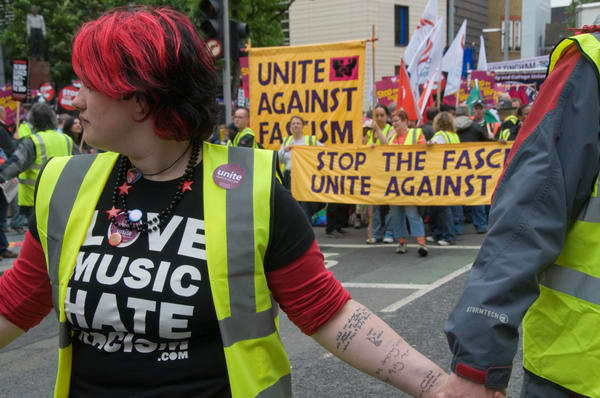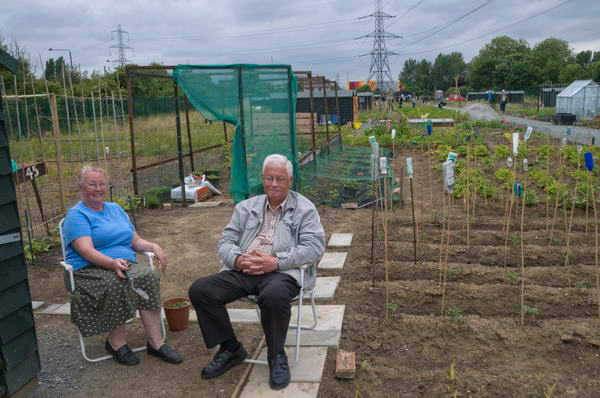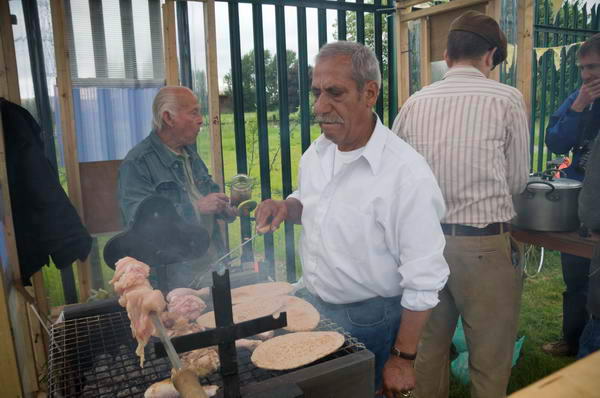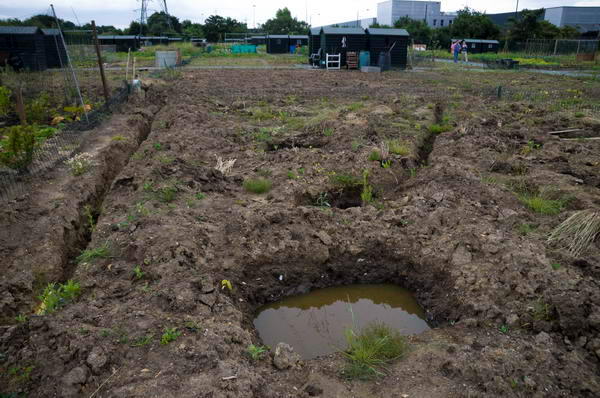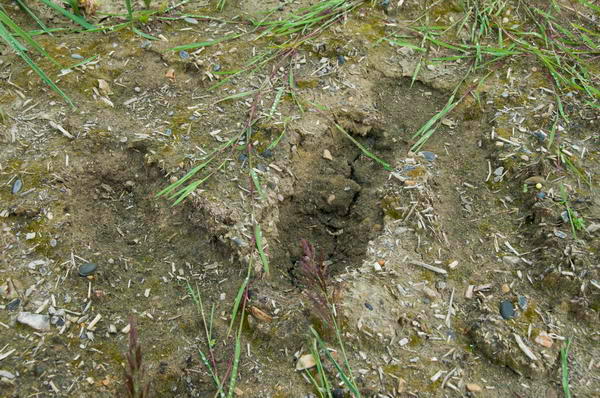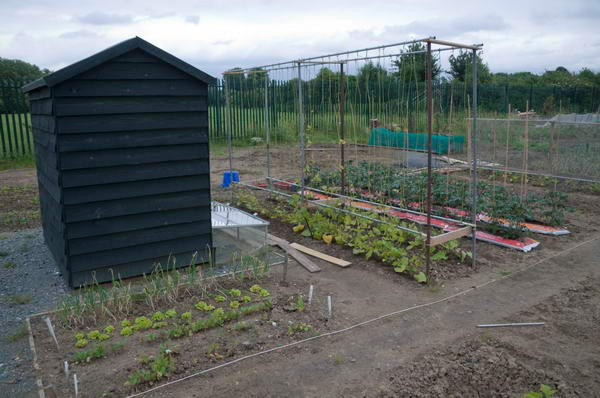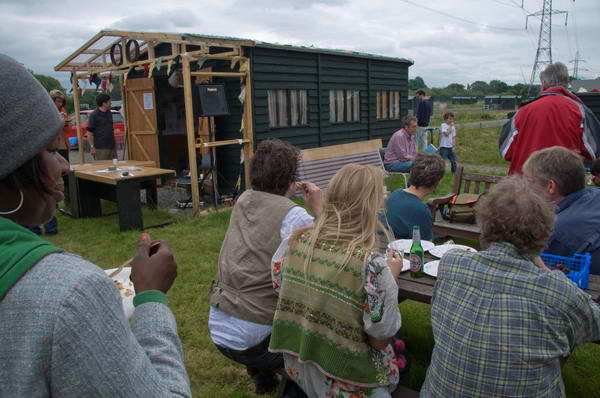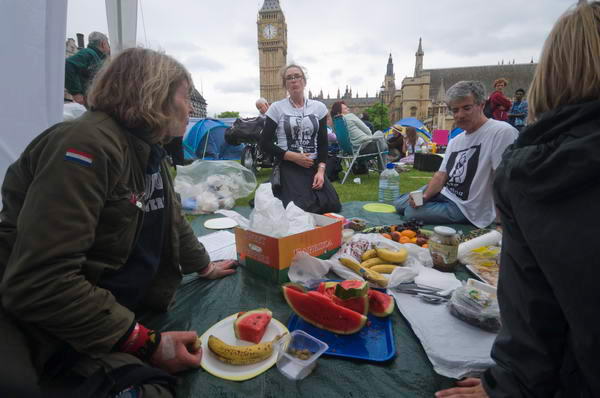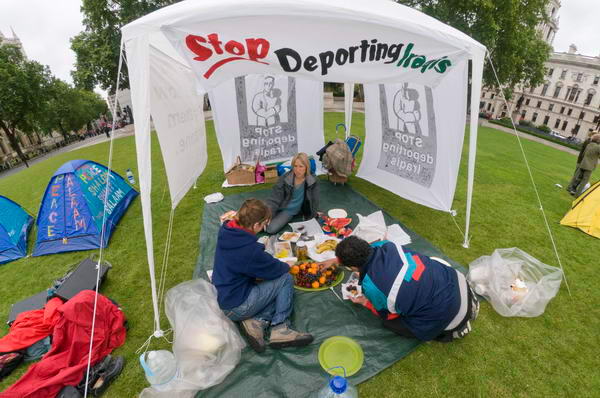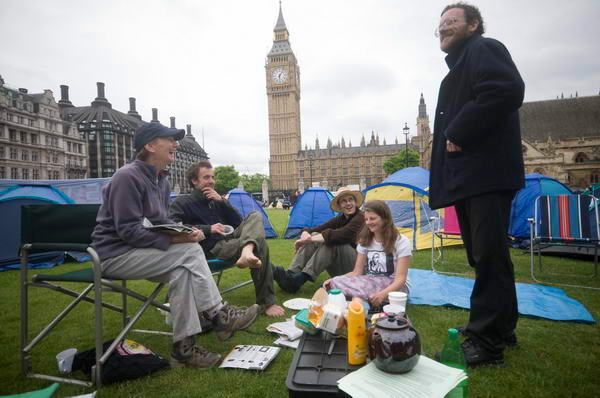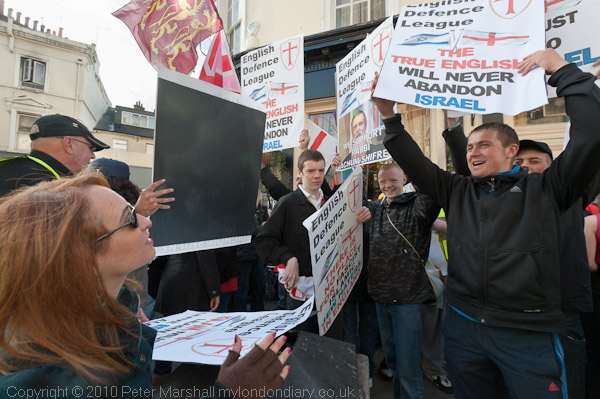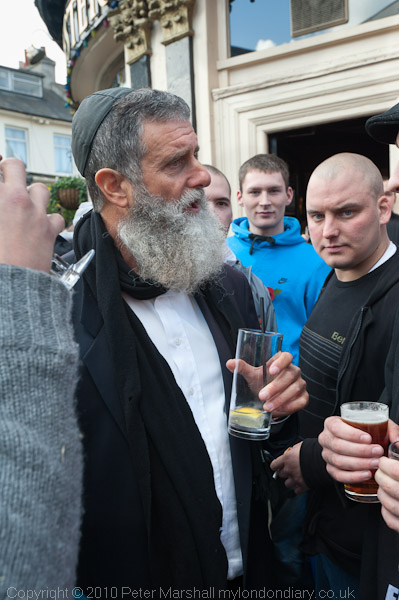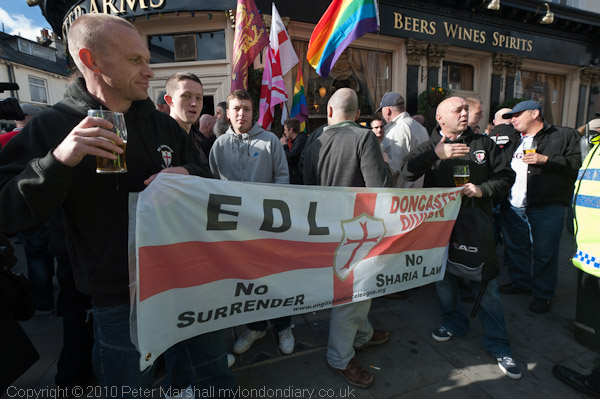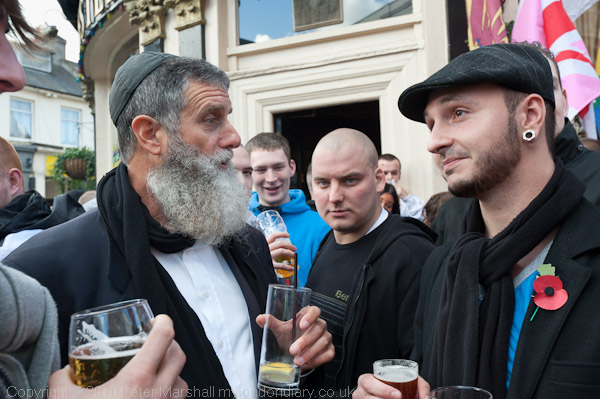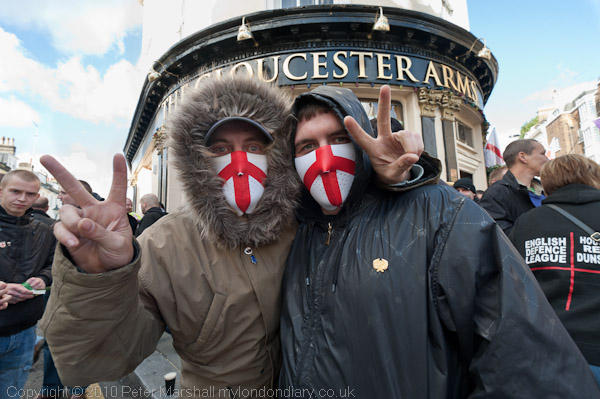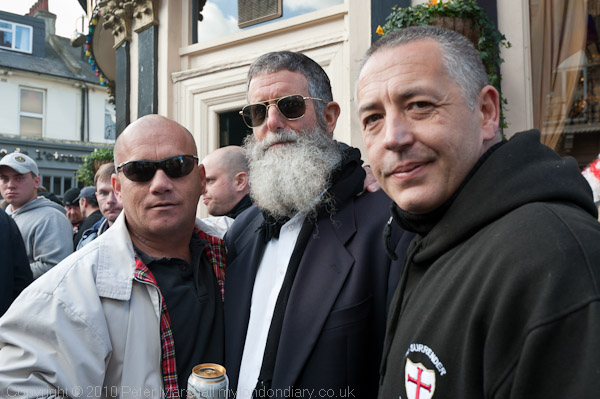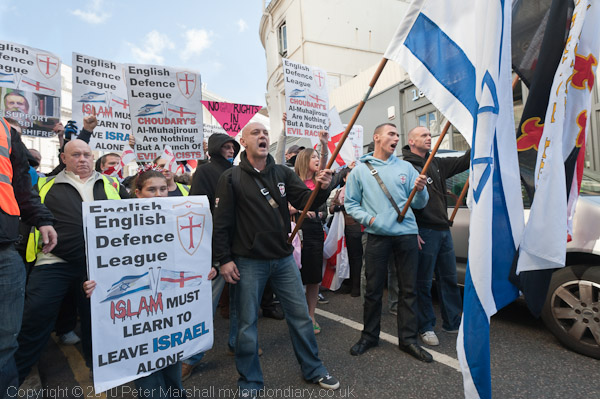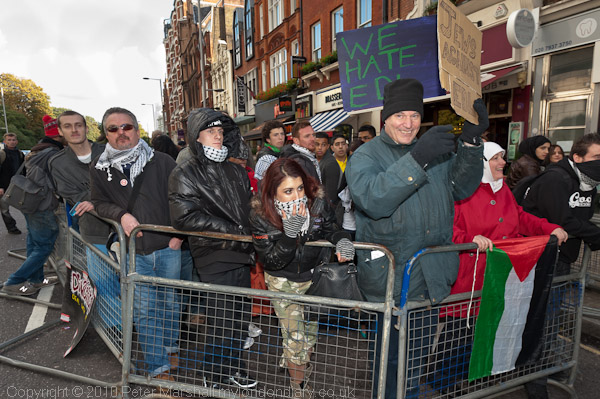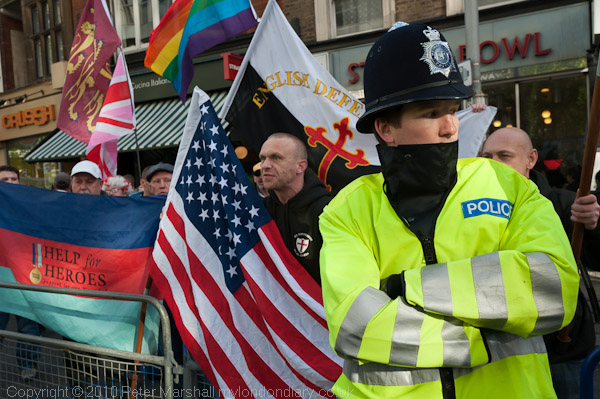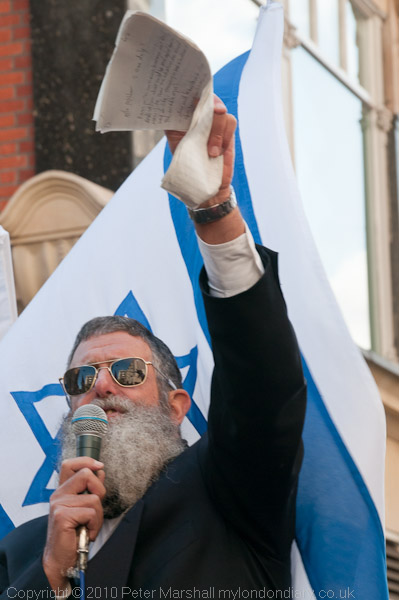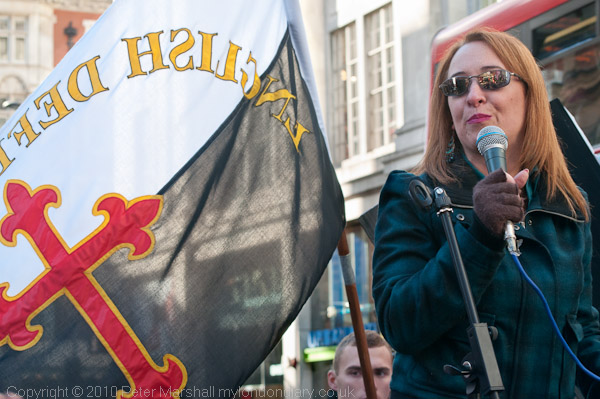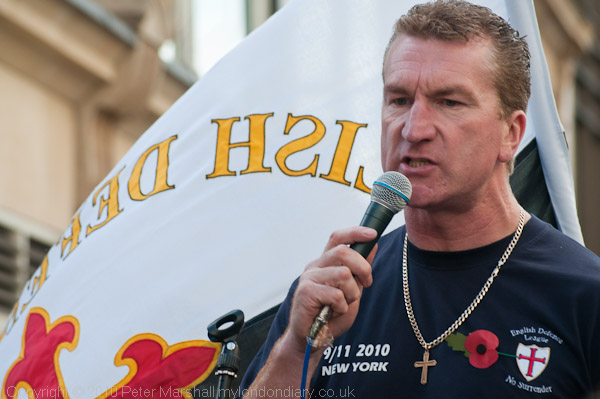EDL Protest Opposed by Unite Against Fascism: Eleven years ago on Saturday 20th September 2014 Unite Against Fascism held a protest against a march and rally by the English Defence League in Whitehall. The whole event was on a very much smaller scale than last Saturday and I was able to move fairly freely between the two groups and photograph both groups.

In 2014 there were only a few hundred people in each of the two groups, with probably twice as many EDL as UAF, and more police who kept them apart, although the two protest pens on Richmond Terrace opposite Downing Street where they gathered were less than a hundred yards apart.

The EDL were protesting “against government inaction on child sexual exploitation, immigration, returning jihadis, FGM, Halal food, Imams, Islamic Schools, Shariah courts, the burkha etc” and in my account on My London Diary I gave more detail on their complaints.

The EDL then marched to to Trafalgar Square for a rally. As I commented, “The atmosphere here was rather friendlier than at some previous EDL protests, and the press were able to walk freely among the gathering crowd, many of whom posed for photographs.”
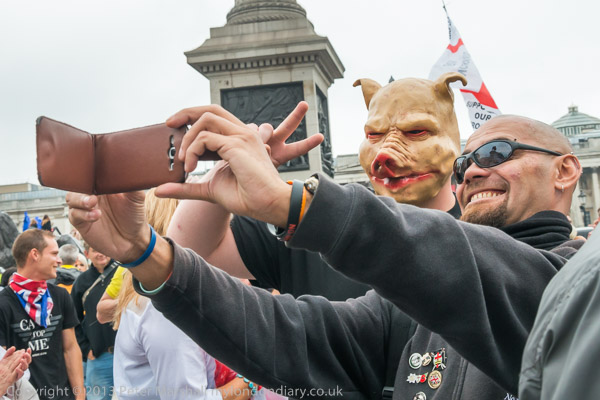
I also reported accurately on the behaviour of the protesters – including a chant of “Allah, Allah, who the f*** is Allah”. As often at EDL protests some did point and shout at me, mistaking me for ‘Searchlight’ photographer David Hoffman – and I was able to correct some of them and we had a polite conversation.

After waiting for a couple of coaches that had been stopped by police on their way into London the EDL lined up for a march down Whitehall back the the pen opposite Downing Street where they held a rally.
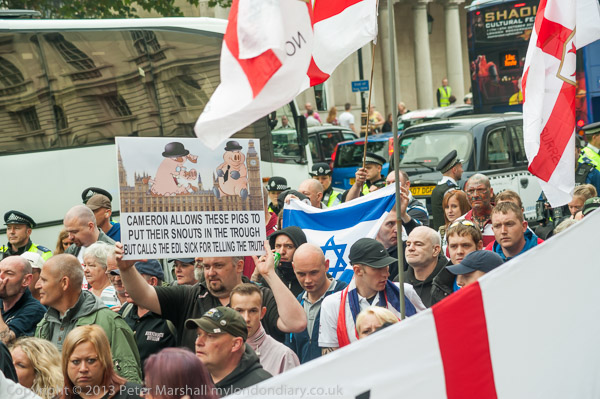
Taking photographs at the rally became much more difficult, with people objecting to being photographed – and some complaining to the police, who told them we had a right to take photographs on the public street. There was a lot of angry shouting of insults at photographers and people trying to block our view, turning their backs and moving in our way, though police prevented any actual violence. But some clearly posed for the photographers.
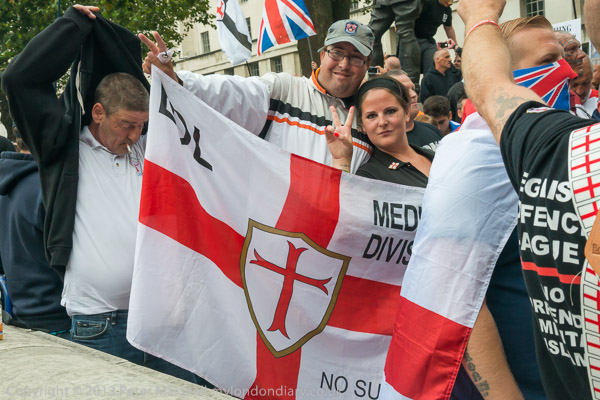
The organisers then made our job more difficult, moving large banners to try and block our view of the speakers. After a while I got fed up and returned to photograph at the counter-protest. Here, although people were shouting angrily at the EDL, there was a very different atmosphere, with none of the hate towards photographers of the EDL, people welcoming being photographed showing their opposition.
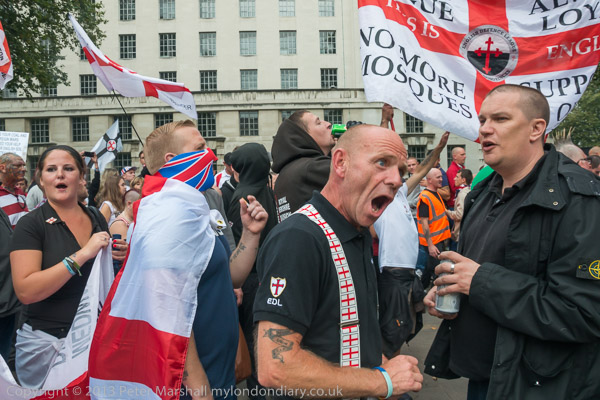
Probably last Saturday there were probably not that many more hardcore Nazis, racists and Islamophobes among the many thousands marching in the ‘Defend The Kingdom’ march. Unfortunately many more have been mobilised by years of anti-immigrant propaganda by both major parties as well as by the incessant publicity given to Farage by our mass media, particularly the BBC, as well as the social media lies of Tommy Robinson and others.
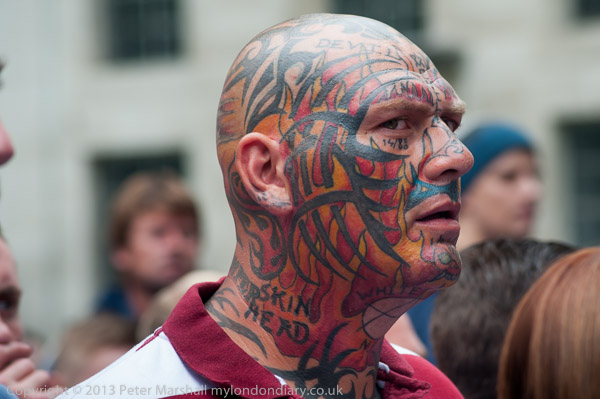
We’ve seen the consistent abuse of language – there are no ‘illegal immigrants’ arriving our beaches, they are asylum seekers, refugees and migrants – some of whom may later become illegal, but the great majority are found to have a legal claim.
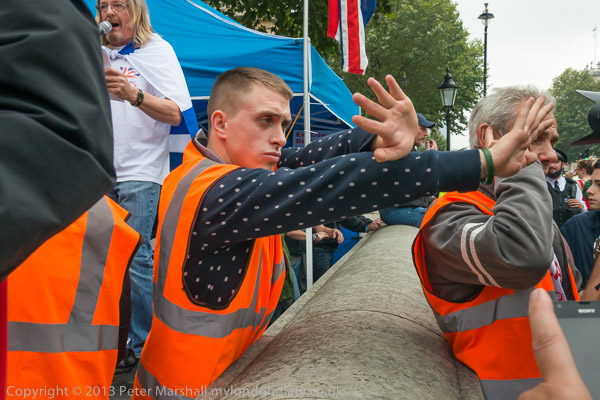
There is no ‘flood’ of migrants – Britain takes far fewer than many other European countries – and certainly a very small number compared to countries closer to the conflicts which are driving migration.
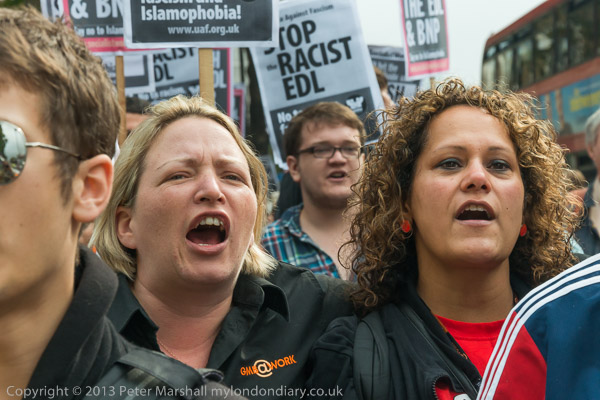
And so on. Both Tory and Labour governments have stirred up hatred with hostile policies trying to outflank the right, while neither has provided humane and efficient systems for dealing with migration. Labour does at least say they are trying to shake up the Home Office, though so far with little apparent effect.
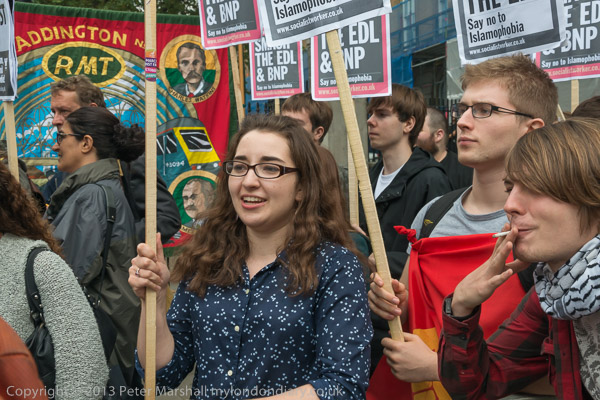
And Labour doesn’t look good. In the recent legal case a temporary injunction was granted against extradition of a man to France, when Home Office officials admitted his case had not been sufficiently considered. Presumably the decision to try and deport him immediately was simply taken on political grounds by the new Home Secretary.
More about the 2014 protest and counter-protest with many more pictures on My London Diary at EDL London March & Rally.
Flickr – Facebook – My London Diary – Hull Photos – Lea Valley – Paris
London’s Industrial Heritage – London Photos
All photographs on this page are copyright © Peter Marshall.
Contact me to buy prints or licence to reproduce.
